
Homesteading 101: The Great Massacre of 2024
Fifteen roosters from fertilization to freezer
Yesterday was the day that we have been both planning for and dreading. We slaughtered and then butchered our sixteen-week-old, homebred roosters.
The day started out hot and humid and only got worse as the afternoon progressed. So, by the time we finished chores, and I did a podcast, took a car to be inspected, had a doctor’s appointment, went to the big box hardware store for supplies, took care of correspondence, set up the rooster killing station, cleaned up the kitchen in preparation, and then got the Substack out, it was already late in the day.
However, the day before, we had withdrawn the food from the rooster’s pen, so their digestive systems were cleaned before we started. This is an important step to ensure the cavity doesn’t end up coated in fecal matter during the butchering. So, the job had to be done.
This whole journey started way back in February when we ended up with 65 extra hen’s eggs from our own birds—this was, of course, before that fateful week when hawks discovered our hens in the barn and massacred them, taking us from around 15 hens to just a handful. Jill wasn’t sure what to do with all the eggs, and I encouraged her to throw them into the incubator.
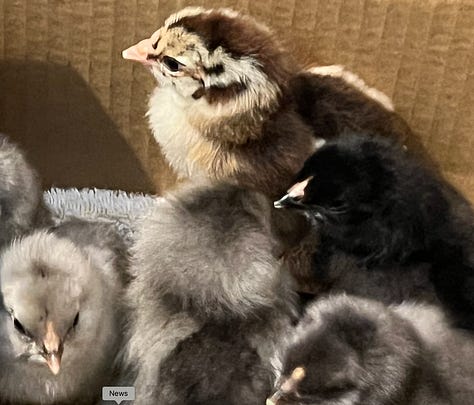


They almost all hatched twenty-three days later, so we had 45+ little chicks to take care of. Some we sold or gave away, and the other thirty, we grew up. First, we kept them under a heating pad, then inside, then into a small outside coop and finally in with the mature hens. Now, keeping one rooster is bad enough, but having fifteen is fifteen times the trouble. At that point, we planned to get them into the freezer at the appropriate maturity. These aren’t a “meat breed,” which meant doing the deed around sixteen weeks.
As an aside, the birds that we buy from the grocery store are a Jumbo Cornish Cross, which can be bought as day-old chicks from McMurray hatchery and other poultry farms set up to sell to the homesteaders and small farmers. These types of birds basically eat themselves to the point of being unable to walk well at eight weeks. So, slaughter occurs at six to seven weeks for those birds, and the carcass is full of white meat and fat.
Our roosters take longer to mature for meat and the flesh is darker, more consistent with a game bird. Of course, we also know that they have eaten right since day one, with organic grains and lots of greens and table leftovers. Below are the mixed flock at about ten weeks old.
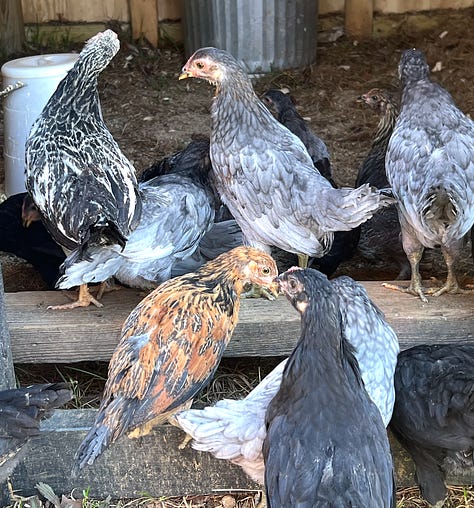

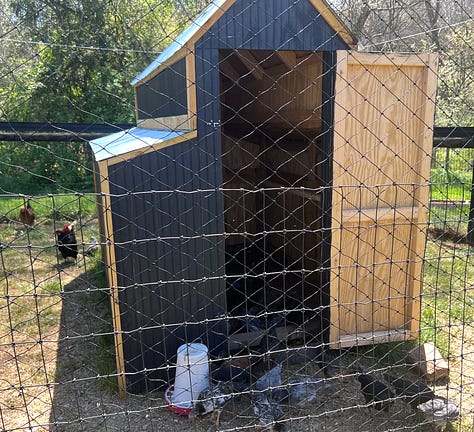
I am going to break a rule about having livestock that an old farmer once told me.
“What happens in the barn, stays in the barn.”
About a week ago, those cockerels began harassing the three mature hens, and unfortunately, we didn’t realize it until one died from injuries to her head. It took a village, but we caught and separated the roosters from the hens. Getting those birds rounded up out of the big pen was rodeo time and luckily for us, Olivia - our amazing farm manager- grew up around roosters. and the girl can catch a rooster faster than I can blink. So, once the boys were all separated into a different pen, it was time to seriously get ready to stockpile some processed chicken. I recalled a children’s book from my youth so long ago. Regarding chickens, it read,
“I keep them in line with just five words: “ “It’s time for chicken stew.”
That time had come for these roosters. They may or may not be good for more than chicken stew—we shall see.
The same farmer also once said to me:
“If you have livestock, eventually you will have dead-stock”
Jill had been gathering and buying the necessary supplies. The extensive list includes a large stockpot, an LP burner and regulator, a water thermometer, a killing cone, sharp knives, buckets, a vacuum sealer and properly sized freezer bags, and a table for working outside. This took a few days.
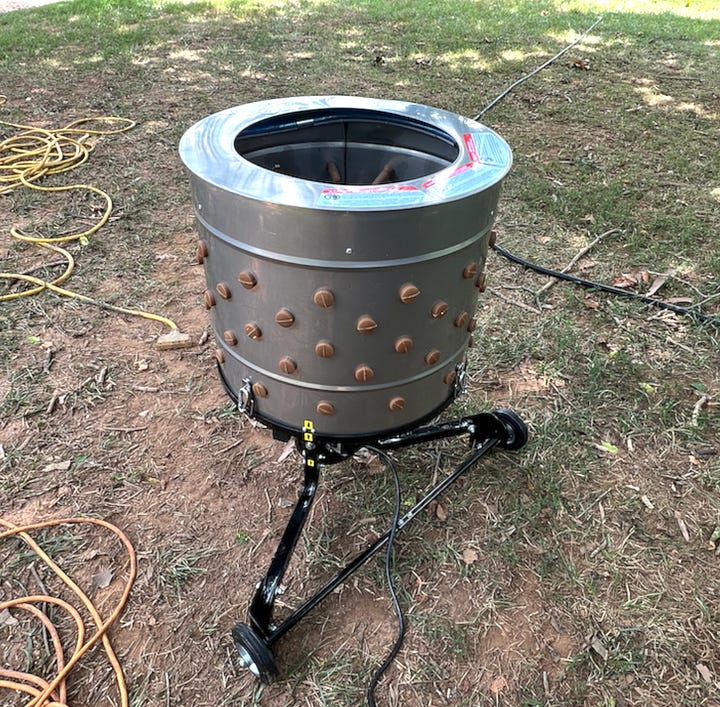

The big purchase was the chicken plucker, which is another one of God’s gifts to small farmers everywhere. Of course, the amount of feathers and mess that comes out of the back end of the machine is a little hard to fathom until you actually use one of these contraptions.
As an aside, the dead bird must be scalded for about a minute and a half in 145-150 F. degree water prior to being loaded into the automatic plucker. This makes the feathers come out easily.
We used what is called a “killing cone” for slaughtering, It is basically a steel funnel, that we attached to a tree. The bird goes in headfirst- and they feel quite comfortable prior to their throat being slit. This position also allows for complete exsanguination. Jill and I agree, this is not a fun or easy job. But there is a real sense of satisfaction in developing these skills. Also in knowing that the birds lived their best lives possible, were raised on organic, GMO-free feed, and in knowing that the slaughter was as humane as could be.
The labor and work to butcher each bird is extensive. It takes time, sharp knives and some skill. Luckily, we had many youtube videos to train on, but we did not finish processing them until midnight.
But the end result? Almost fifty pounds of organic-fed, home-bred, home-raised chicken.
Next time we do this, and there will be a next time, we have lots of people who want to learn how to do the deed. Who want to come learn and help. This is how we create a better world. We all work to teach each other that we don’t need industrialized agriculture.
One chicken at a time.
This is life. This is how people eat.
This is how we get rid of the factory “farms”. We teach our family, friends, our communities, that food grown in such places, is something that no one should want any part of. That there is a better way.
We learn the skills to be independent. We apply those skills. We teach our children, friends and families those skills. We improvise and be productive.
Providing for ourselves is key.

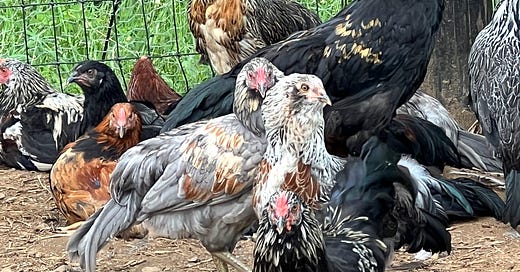



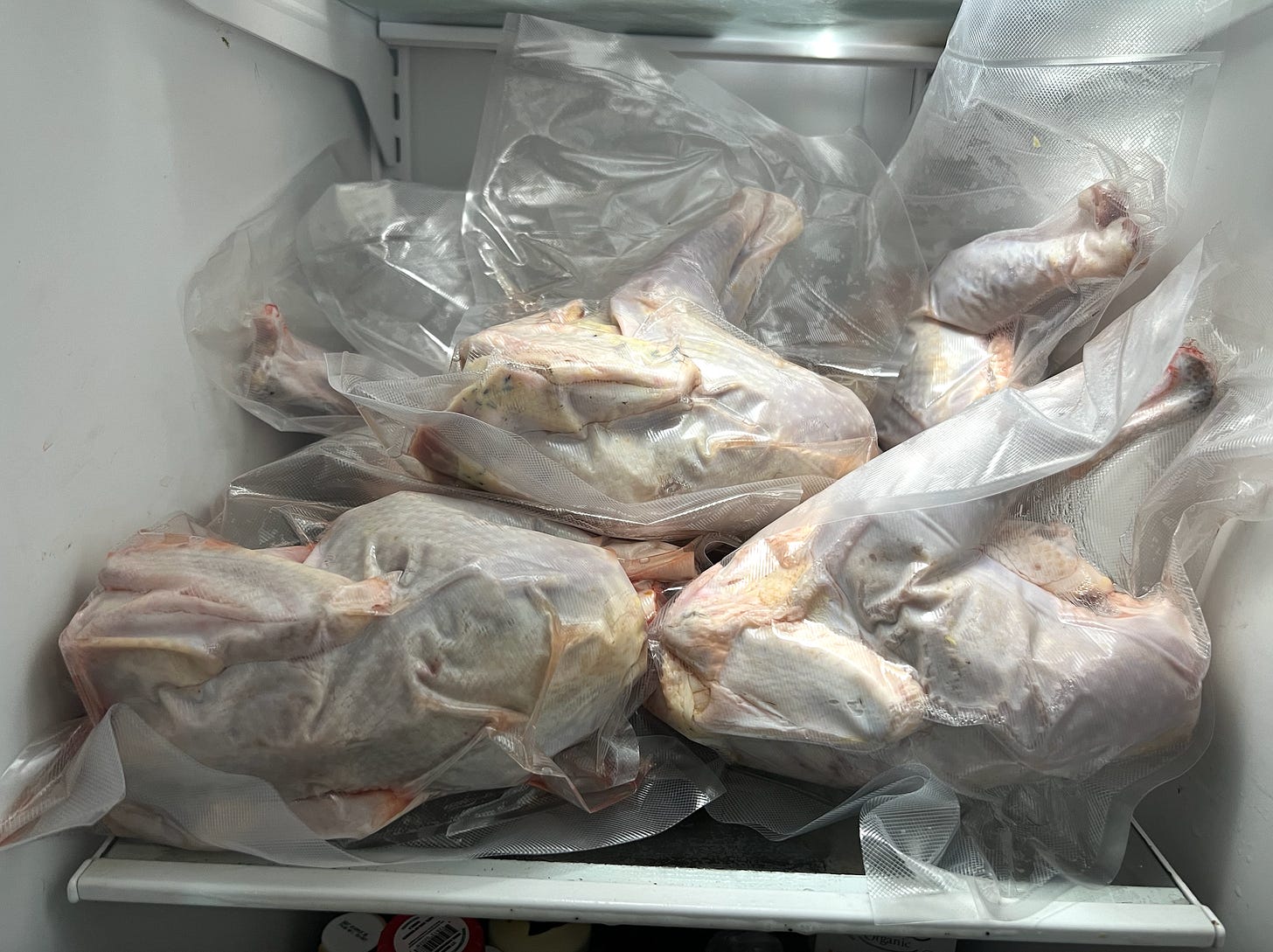











A chicken plucker ! OMG that thing must be great. I remember dad killing, gutting and plucking the chickens, and the turkeys, by hand! Way better than anything you can buy in the store, though. Chicken from the store does not even taste like it anymore. (we stopped eating it last summer when the dog got sick from it - chicken allergy - probably from all the filth they feed and inject the poor beasts)
I know from my late grandmothers that harvesting livestock of any kind is not for the faint of heart, but quite necessary for human survival. They would have loved the gadgets you list.